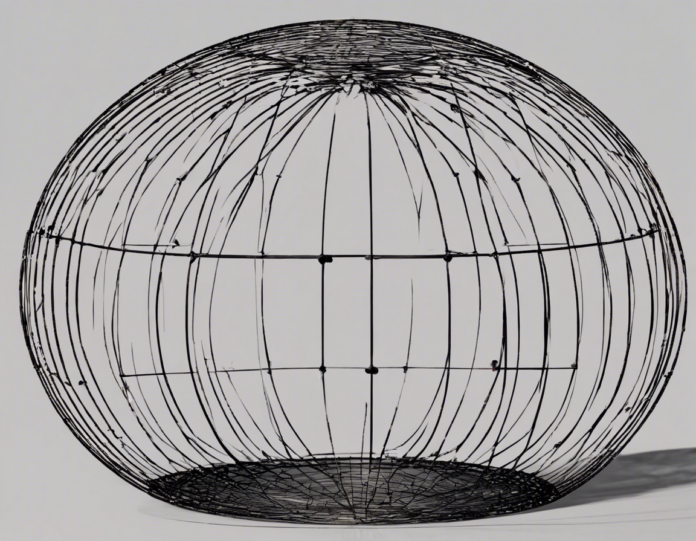Electricity is an essential aspect of our daily lives, and understanding the behavior of conductors is key to harnessing its power effectively. In this article, we will delve into the concept of conductivity in the context of a 10cm spherical conductor. We will explore the factors that influence conductivity, the equations involved, and the practical applications of this knowledge. Let's embark on this enlightening journey into the world of electrical conductivity.
Conductivity and Its Importance
Before we focus specifically on a spherical conductor, it's crucial to grasp the concept of conductivity itself. Conductivity refers to the ability of a material to allow the flow of an electric current. Materials are classified as conductors, insulators, or semiconductors based on this property.
Conductors have high conductivity and readily allow the flow of electrons. Metals such as copper and aluminum are excellent conductors. On the other hand, insulators have low conductivity and inhibit the flow of electrons. Examples include rubber and glass. Semiconductors have conductivity values between those of conductors and insulators.
Understanding a 10cm Spherical Conductor
Characteristics of a Spherical Conductor
A spherical conductor possesses unique characteristics due to its shape. The electric field within a conductor in electrostatic equilibrium is zero, meaning that the charges distribute themselves in such a way that cancels any internal electric field. This phenomenon has far-reaching implications for the behavior of charges within a spherical conductor.
Equation for Conductivity of a Spherical Conductor
The conductivity of a spherical conductor can be determined using the formula:
σ = n × e × μ
Where:
- σ is the conductivity
- n is the number density of charge carriers
- e is the charge of each carrier
- μ is the mobility of the charge carriers
Factors Influencing Conductivity in a 10cm Spherical Conductor
Several factors influence the conductivity of a spherical conductor, including:
-
Material: The material from which the conductor is made plays a significant role. Metals generally have higher conductivity compared to other materials.
-
Temperature: Temperature affects the mobility of charge carriers. Higher temperatures can lead to increased collisions between carriers and impurities, reducing conductivity.
-
Presence of Impurities: Impurities within the conductor can impede the flow of electrons, thus affecting conductivity.
-
External Electric Fields: External electric fields can influence the distribution of charges within the spherical conductor, impacting conductivity.
Practical Applications of Understanding Conductivity in Spherical Conductors
Knowledge of conductivity in spherical conductors finds application in various real-world scenarios, including:
-
Electrical Transmission: Understanding conductivity is crucial for designing efficient electrical transmission systems with minimal power loss.
-
Electronic Devices: In the design of electronic circuits and devices, knowledge of conductivity guides the selection of appropriate materials for optimal performance.
-
Electroplating: Conductivity plays a vital role in electroplating processes, where a conductive material is coated with a layer of another metal through the application of an electric current.
-
Power Generation: In power generation facilities, such as nuclear or thermal power plants, conductivity considerations are essential for efficient energy production and distribution.
Frequently Asked Questions (FAQs)
1. What is the relationship between conductivity and resistivity?
- Answer: Conductivity and resistivity are inversely related. Conductivity (σ) is the reciprocal of resistivity (ρ), with the relationship given by σ = 1/ρ.
2. How does temperature affect the conductivity of a material?
- Answer: Generally, conductivity decreases with increasing temperature due to the higher likelihood of collisions between charge carriers and impurities at elevated temperatures.
3. Can a spherical conductor have a non-uniform charge distribution?
- Answer: No, in electrostatic equilibrium, a spherical conductor will always have a uniform charge distribution on its surface.
4. Why is the electric field within a spherical conductor zero in electrostatic equilibrium?
- Answer: In electrostatic equilibrium, charges redistribute themselves within the conductor in such a way that cancels any internal electric field, resulting in a state of equilibrium with zero field.
5. How does the size of a spherical conductor influence its conductivity?
- Answer: The larger the spherical conductor, the greater the surface area available for charge carriers to move, potentially increasing conductivity.
In conclusion, a thorough understanding of conductivity in a 10cm spherical conductor is vital for various applications in the field of electricity and electronics. By grasping the underlying principles and equations related to conductivity, one can optimize the design and performance of electrical systems. Conductivity not only serves as a fundamental concept in physics but also underpins numerous technological advancements that shape our modern world.


Recent comments